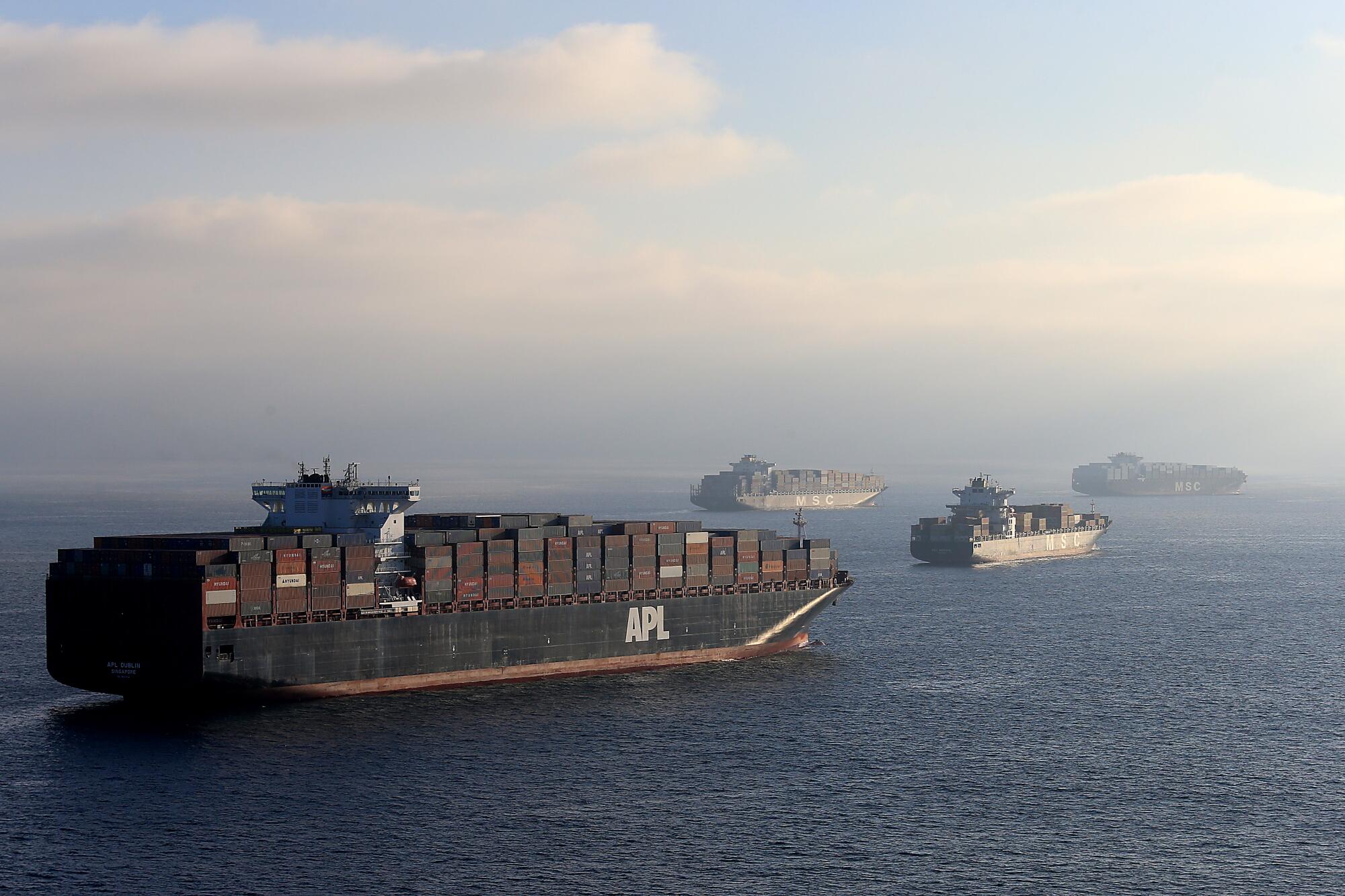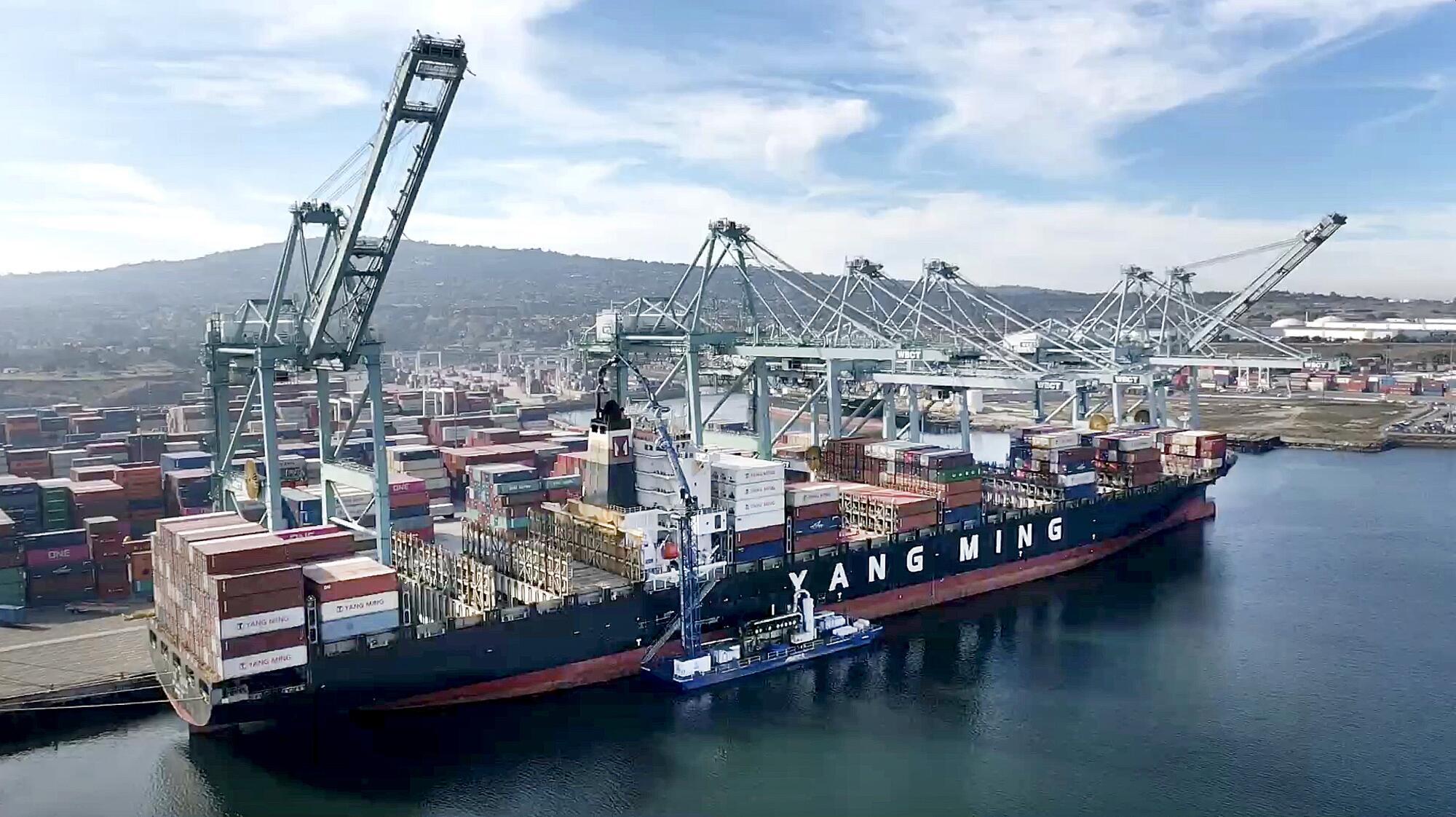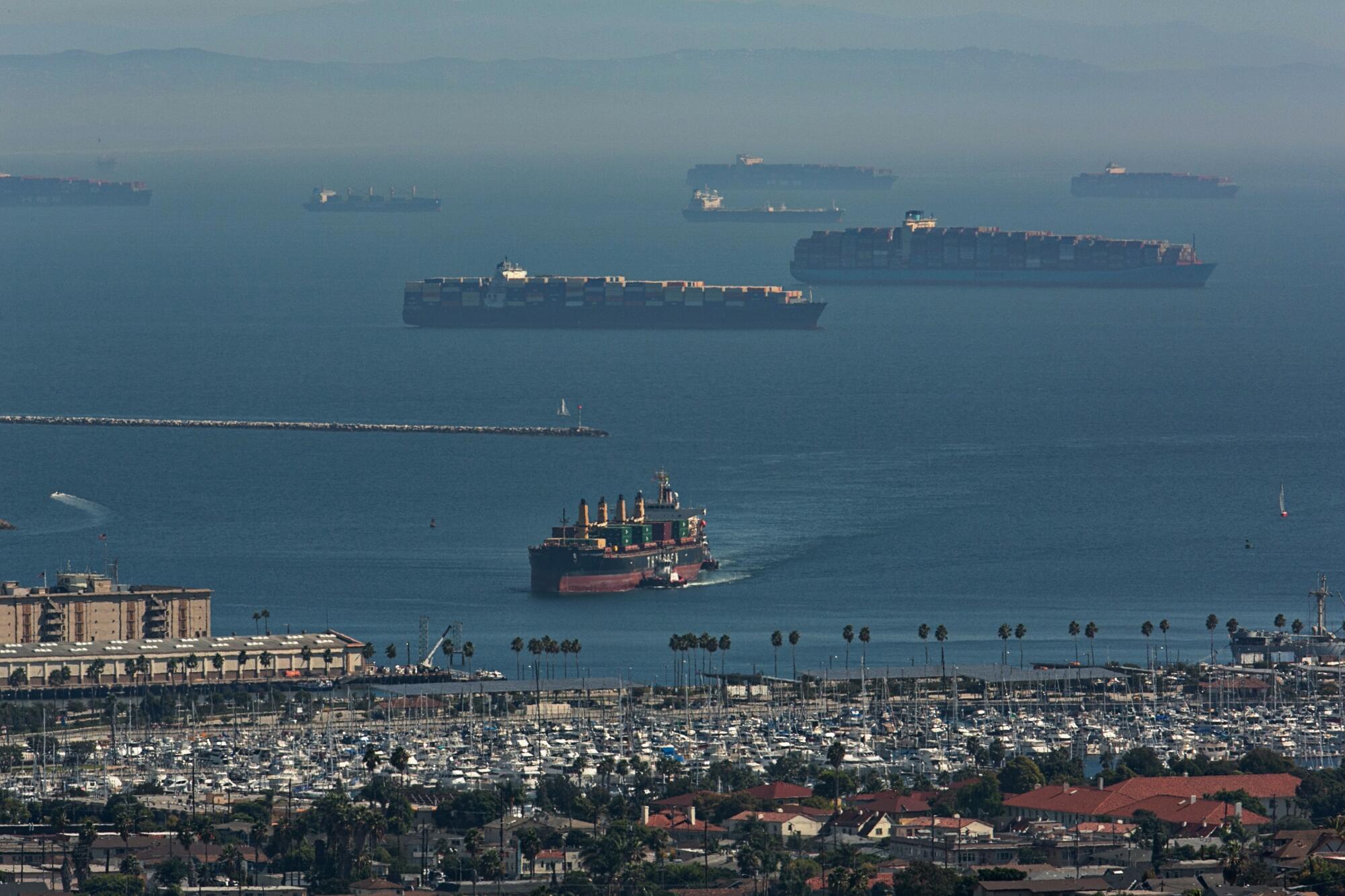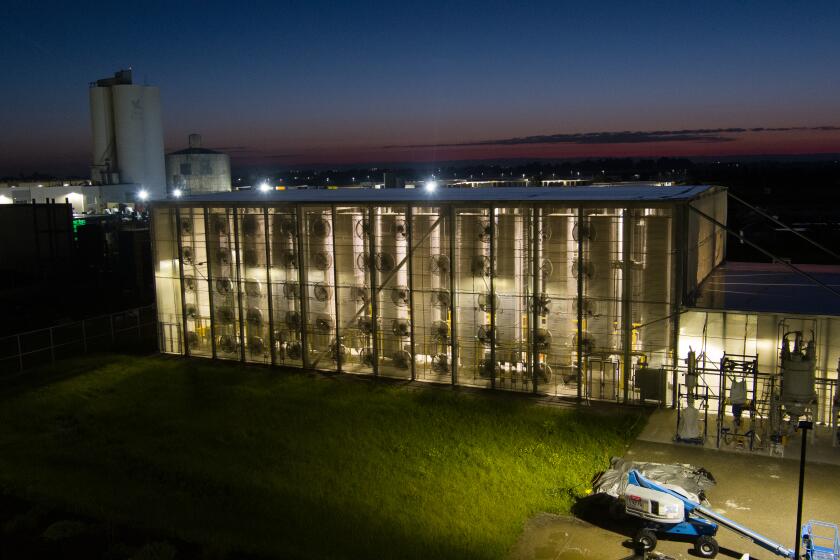
A major shift in global shipping regulations intended to improve air quality may have temporarily — and inadvertently — set off a geoengineering reaction that is warming the planet, new research has found.
In January 2020, the International Maritime Organization substantially reduced the amount of harmful sulfur dioxide content allowed in shipping fuel. The move was part of a broad strategy to improve public health.
By reducing sulfur dioxide and fine particulate matter spewed by ships, the change would help reduce strokes, asthma, lung cancer, and other diseases suffered by people who live in and around ports.
But the change also had an unexpected consequence: In the past, dirtier ship emissions contributed to the creation of bright clouds over the ocean. These bright clouds helped to reflect some of the sun’s light and energy back into space. When sulfur dioxides were reduced, however, it resulted in fewer bright clouds, so more of the sun’s heat and energy were able to reach Earth’s surface, contributing to global warming.
Aggressive and impactful reporting on climate change, the environment, health and science.
The added energy gain from all that sunlight, sometimes referred to as climate forcing, contributed to anomalously high global temperatures in 2023 — the planet’s hottest year on record — and the current 12-month streak of record-hot months, according to a study published recently in the journal Communications Earth & Environment.
What’s more, researchers say this “dimming” of cloud cover could lead to a doubling or more of the warming rate in the 2020s compared with the rate since 1980.
“The results turned out to be pretty significant,” said Tianle Yuan, the study’s lead author and a senior research scientist at the University of Maryland Baltimore County and NASA’s Goddard Space Flight Center. “Because of the dimmer clouds, we effectively gained more energy to the climate system because more sunlight is coming in.”

The effect is the opposite of what happens during volcanic eruptions, which are known to temporarily cool the planet by spewing sun-blocking sulfur dioxide into the atmosphere. Sulfur dioxide, a reactive gas found in many marine fuels, is also released when those fuels are burned.
The fuel regulation sought to reduce the upper limit on the sulfur content of ships’ fuel oil from 3.5% to 0.5%. This change resulted in a roughly 80% reduction in harmful sulfur dioxide emissions from ships worldwide.
But the change also created an “inadvertent geoengineering termination shock with global impact,” the study says. Some of the strongest impacts were found in the North Atlantic, which began experiencing record-warm sea surface temperatures in 2023.
Yuan said it is challenging to calculate the specific temperature increase associated with the new fuel regulation, because there are so many variables affecting the climate system, including El Niño. However, by modeling the forcing alone, his team found that the change could lead to an increase of 0.16 of a degree Celsius within the next seven years.
“The warming effect is consistent with the recent observed strong warming in 2023 and expected to make the 2020s anomalously warm,” the study says.
Global average temperatures and CO₂ levels continue to soar. May was Earth’s 12th consecutive hottest month on record, officials announced this week.
Not everyone agrees with the findings, however.
While there is broad consensus that the change in shipping regulations contributed to some planetary warming, the magnitude of that change is not yet settled science, according to Zeke Hausfather, a climate scientist with Berkeley Earth, who noted that different models lead to a wide range of findings.
“They used a very simple model,” he said. “And in the real world, we know from more complex climate models and from historical relationships between forcing and warming, that there’s bigger lags in the system, and that not as much warming is going to be realized as quickly as they assumed.”

Subscribers get exclusive access to this story
We’re offering L.A. Times subscribers special access to our best journalism. Thank you for your support.
Explore more Subscriber Exclusive content.
At least three other upcoming studies on the regulation change found different results, both in terms of additional heat entering the climate system and in terms of temperature, ranging from 0.03 to 0.2 degree Celsius of warming — or less than half as much to an amount that’s even higher.
“What this illustrates is the way that science works when you find a new problem like this,” Hausfather said. “A bunch of different teams approach it using slightly different approaches, and they get different results.”
He said climate researchers will now work to synthesize the different models and studies, which could mean another year or two before any conclusions are drawn.
“I think everyone is pointed in the right direction here. This had an effect — it was not a negligible effect — but exactly how big it is is something we still need to work out as a community,” he said. “I don’t think we’re actually going to know the answer, for sure, for a while here.”
Giant sun shades, 40-foot-tall air filters, stratospheric sulfur injections: Here are some of the wild and wondrous ways we might save the planet.
That the shipping regulation change simultaneously benefited public health and worsened global warming is also not lost on those studying the problem.
Short-term exposure to sulfur dioxide can harm the human respiratory system. Larger, long-term concentrations in the air can contribute to the formation of fine particulate matter , which can penetrate the lungs and enter the bloodstream, leading to significant cardiovascular and pulmonary health problems, according to the Environmental Protection Agency.
Recent decades have already seen broad efforts to reduce sulfur emissions, including regulations dating back to the 1990s to address acid rain, another of its byproducts. But ship emissions continued to pose health threats, and a 2016 study estimated that not reducing ship sulfur limits by 2020 would contribute to more than 570,000 additional premature deaths worldwide between 2020 and 2025.
Subscriber Exclusive Alert
If you're an L.A. Times subscriber, you can sign up to get alerts about early or entirely exclusive content.
You may occasionally receive promotional content from the Los Angeles Times.
“No one wants millions of people to die a year from air pollution, even though it has a cooling benefit to the climate,” Hausfather said.
Daniele Visioni, an assistant professor of Earth and Atmospheric Sciences at Cornell University, said similarly that the International Maritime Organization’s regulation “just made sense.”
“Air quality is a much bigger killer, and in a much more uneven way, than a small contribution to warming, and so it makes perfect sense to improve air quality,” he said. “These kind of studies should in no way be seen as a way to say we should stop improving our air. On the other hand, it does highlight the fact that the climate system is complex, and that no policy is perfect.”

Visioni is co-author of one of the upcoming papers on the matter, which is available for pre-print review. It came to some conclusions that mirrored Yuan’s — including that the shipping regulation change could lead to 0.2 of a degree Celsius of warming by 2030.
It also looked backward to try to determine how big of a role the sulfur reduction played in 2023’s extreme warmth, concluding that the regulation change “can be considered as a primary contributor” capable of explaining the anomaly. It also found that the regulation made 2023’s temperatures about 10 times more likely than if the change hadn’t occurred.
“We got definitely unlucky with a warm year, but this contribution from shipping emissions sort of pushed it toward the world record,” Visioni said.
However, not even that finding is agreed upon. Another recent study determined that 91% of last year’s heat burst was because of climate change and 8% because of El Niño, but said the reduction in sulfur emissions was effectively canceled out by emissions from raging wildfires.
While Visioni disagreed with that finding, he said it all adds to a growing body of work about the ways in which human activities shape the environment.
“We need more and not less of these kind of experiments, because we need a much better grasp and a much better understanding of how aerosols from human emissions, whether inadvertent or advertent, affect clouds and then affect the climate,” he said.
Blistering global temperatures have one NASA scientist warning: ‘We could be in uncharted territory.’ Others aren’t so sure.
Indeed, Yuan’s paper says the regulation’s undeniable warming influence makes a case that some geoengineering techniques could work, noting that “marine cloud brightening may be a viable geoengineering method in temporarily cooling the climate.”
Marine cloud brightening is a controversial form of atmospheric manipulation that uses sea salt particles to increase the reflectivity of clouds in order to cool the planet — effectively mimicking what happens during volcanic eruptions. Last week, the Alameda City Council voted unanimously to halt plans from researchers at the University of Washington to test the concept off the coast of San Francisco.
Yuan said its scientific viability does not equate to an endorsement.
“Our point is not trying to advocate that we should do this — we are kind of advocating that we should understand these aspects much better before we make a decision, because temperature is just one metric, and it’s not enough,” he said.
In fact, temperature changes are just one of many potential outcomes of marine cloud brightening and other forms of geoengineering. It can also affect weather systems, monsoons and other precipitation patterns in a manner that is not evenly distributed across the globe, creating “winners and losers,” he said.
What’s more, many conversations around geoengineering tend to ignore the underlying problem — that the vast majority of climate change continues to stem from carbon emissions tied to the burning of fossil fuels.
While cloud brightening and other efforts might lead to temporary cooling, they should not be a replacement for efforts to scale back on those emissions, Yuan said.
“Because this tool has both beneficial and adverse consequences, we should study and understand them well before we get into this,” he said. “But in the end, it’s not a long-term solution, because it’s not addressing the driver that is fundamental to climate change.”
Toward a more sustainable California
Get Boiling Point, our newsletter exploring climate change, energy and the environment, and become part of the conversation — and the solution.
You may occasionally receive promotional content from the Los Angeles Times.











